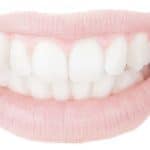Can follow-up damage be prevented with explantation of dental implants?
12 April 2021
| Dental implants have been established as a therapy for decades. With the increasing number of implants placed, complications are also on the rise. The complications can be of various kinds: biological failures, such as failure of osseointegration or peri-implantitis, or mechanical adverse events, such as fractures of all materials involved in the restoration. Furthermore, iatrogenic factors such as overheating or contamination of the peri-implant bone tissue can impair the success of an implant-supported restoration. In addition, functional reasons, for example, overloading of the implant body as a result of incorrect positioning with resulting bone resorption, can also lead to implantological failure and may require the removal of an implant body. In this regard, the question arises as to the best possible procedure for implant removal with the highest possible success rate and low invasiveness with a correspondingly low complication rate. These aspects are of great importance, especially with regard to re-implantation. |
|
| Dental implants can be removed again using the reverse torque technique, i.e. a force directed against the insertion movement. However, this requires a special unscrewing instrument, which is inserted into the respective implant and enables a corresponding force transmission. However, this requires an intact connection geometry, which is often no longer present after implant fractures; therefore, the reverse torque technique can often not be used for this indication. Another disadvantage of this method is resulting fractures of the implant body if the force application exceeds the stability of the implant. Alternatively, trephine drills can be used that encompass the implant body and separate it from the surrounding bone tissue. For example, in a publication presented here, the reverse torque technique was used up to a force of 200 Ncm, and beyond that a combination of trephine burrs of 3-4 mm depth followed by a reverse torque technique. This approach seems to be suitable for reducing the risk of implant fractures. In addition, for clinically indicated removal of implant bodies, it is possible to resort to the aid of classical rotary instruments, piezosurgery or even laser application. In contrast, the innovative variant of thermally induced bone necrosis presented in an experimental ex vivo model naturally requires further preclinical and clinical investigations. |
|
| Author(s) | Source |
| Kämmerer PW, Lehmann KM | Deutscher Ärzteverlag, ZZI, 2021, 37, 04, 210-212 (german) |
| This is a post of a scientific or business information. The information given here is checked thoroughly by “Implant-Register”. However we can´t be responsible for the content. The content usually is shortened to make it understandable for many. Read the linked original text if you are interested. Contact the publisher, if you have questions. You may inform us about changes of the information to improve the Register. | |
| Comments: n/a let us know |
|
Find NEWS and PUBLICATIONS here according to your interests or use the search box.









